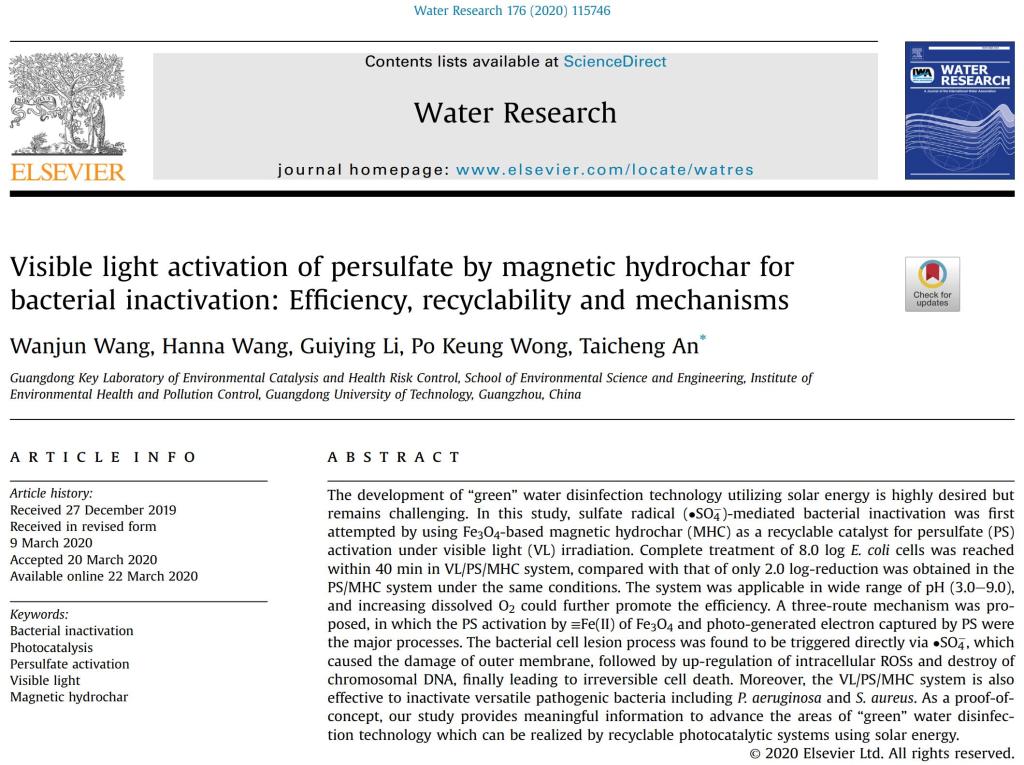Download Address:https://doi.org/10.1016/j.watres.2020.115746
Wanjun Wang, Hanna Wang, Guiying Li, Po Keung Wong, Taicheng An*. Visible light activation of persulfate by magnetic hydrochar for bacterial inactivation: Efficiency, recyclability and mechanisms. Water Res. 2020, 176:115746.

ABSTRACT
The development of “green” water disinfection technology utilizing solar energy is highly desired but remains challenging. In this study, sulfate radical (•SO­4−)-mediated bacterial inactivation was first attempted by using Fe3O4-based magnetic hydrochar (MHC) as a recyclable catalyst for persulfate (PS) activation under visible light (VL) irradiation. Complete treatment of 8.0 log E. coli cells was reached within 40 min in VL/PS/MHC system, compared with that of only 2.0 log-reduction was obtained in the PS/MHC system under the same conditions. The system was applicable in wide range of pH (3.0–9.0), and increasing dissolved O2 could further promote the efficiency. A three-route mechanism was proposed, in which the PS activation by ≡Fe(II) of Fe3O4 and photo-generated electron captured by PS were the major processes. The bacterial cell lesion process was found to be triggered directly via •SO4−, which caused the damage of outer membrane, followed by up-regulation of intracellular ROSs and destroy of chromosomal DNA, finally leading to irreversible cell death. Moreover, the VL/PS/MHC system is also effective to inactivate versatile pathogenic bacteria including P. aeruginosa and S. aureus. As a proof-of-concept, our study provides meaningful information to advance the areas of “green” water disinfection technology which can be realized by recyclable photocatalytic systems using solar energy.

